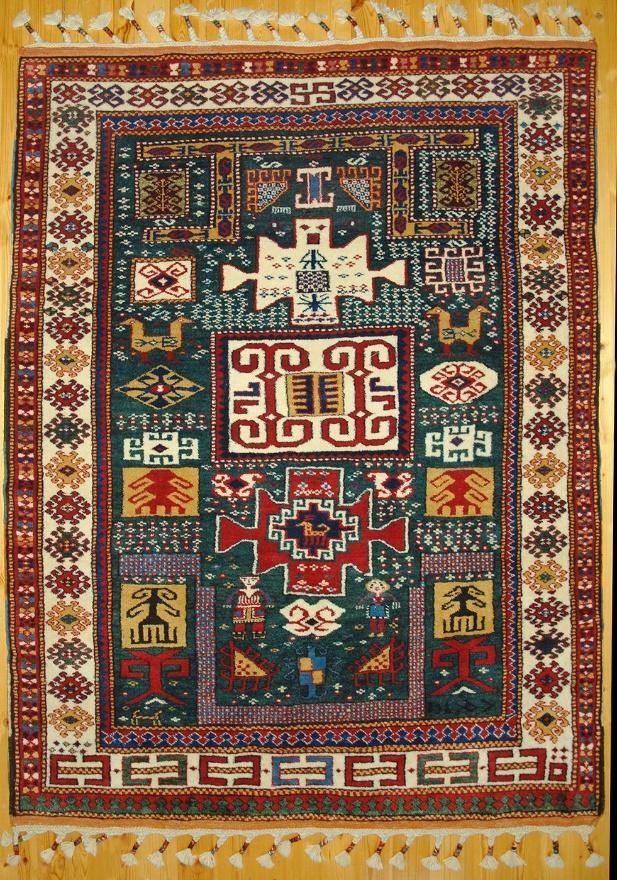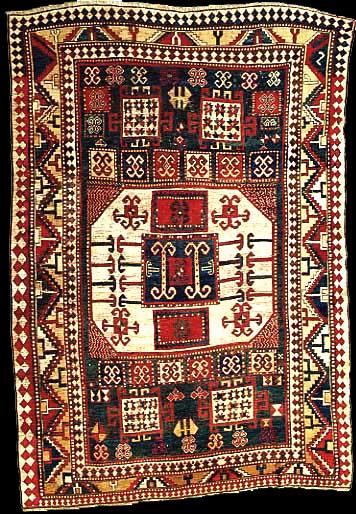Karachop Rugs

Karachop (also Romanized as Karachoph, Karachov), was a village south of Tbilisi. It may be located today in the Lori region of Armenia. Karachop rugs are classified as Kazaks. The reputation of Kazak pieces backs to the 19th century when rug production of the area boomed under the Tsarist Russia.
Between the Caucasian rivers Kura (Cyrus) and Aras (Araxes) a vast indefinite region, called Kazak, is deemed, and best known for typical antique rugs woven throughout the region. There are a good number of antique Kazak rugs designed with the attributed to design Karachop. These have been woven mostly in the late 19th and early 20th centuries.

Technical aspects and the structure of Karachop Rugs

Antique Karachop have a knot density of about 60 knots per square inch. Knots are symmetric (Turkish). Warps, wefts and piles are woolen. Area rug sizes are favored including long ones. Runners, too, could be found. Many pieces with typical Karachop have an area of 39 square feet.


Dyeing and painting of Karachop rugs
The Karachop palette consists typically of saturated colors. Red, blue, ivory and green are dominant, while the secondary palette include a vast range of light and dark shades, from to apricot to black of undyed wool. Various blues have been used. Brick red of the region is famous. Deep pinks and golden camel are common.
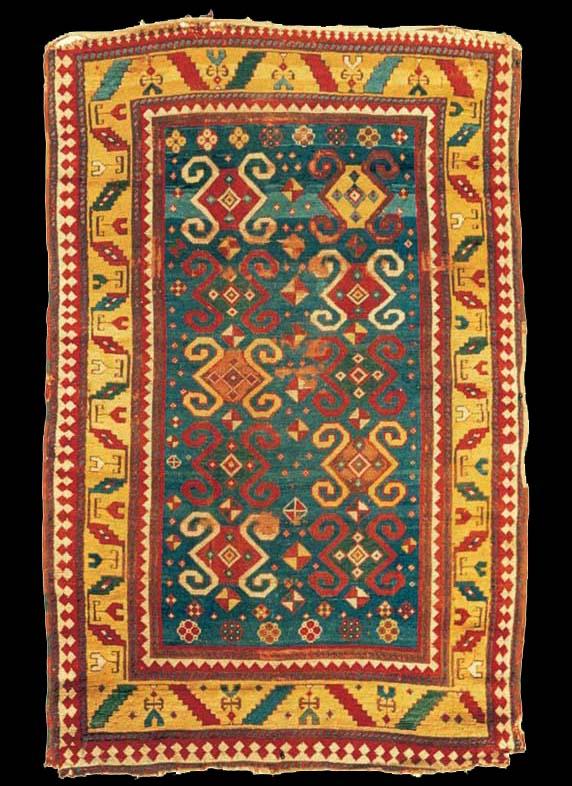
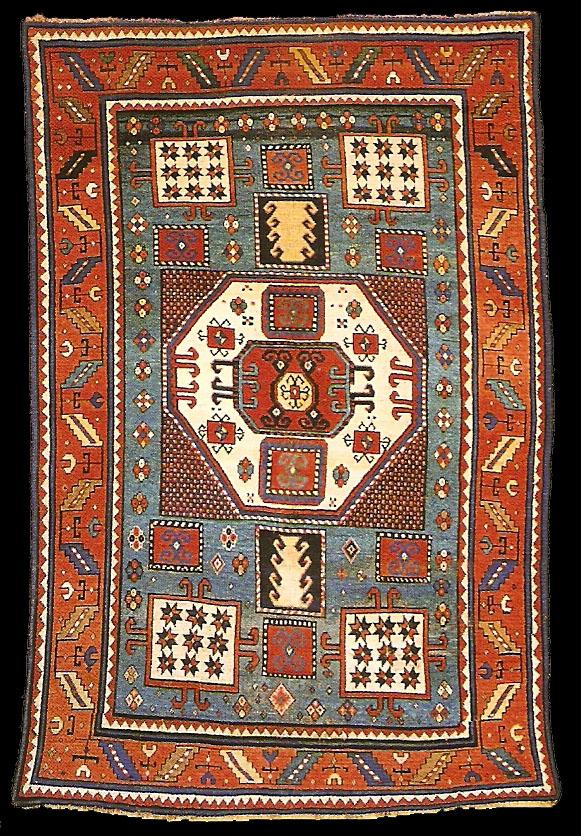
Designs and patterns of the Karachop rugs
Nineteenth-century rugs attributed to this area are considered Kazaks. They have a large central octagon medallion with two couples of squares above and below the medallion. This may be called ‘quincunx’ structure which is an arrangement of five objects with four at the corners of a square or rectangle and the fifth at its center, used for the five on a dice or playing card, and in planting trees. Quincunx structure is also a common arrangement in Anatolian pieces, therefor some suggest an Anatolian origin for Karachop designs.
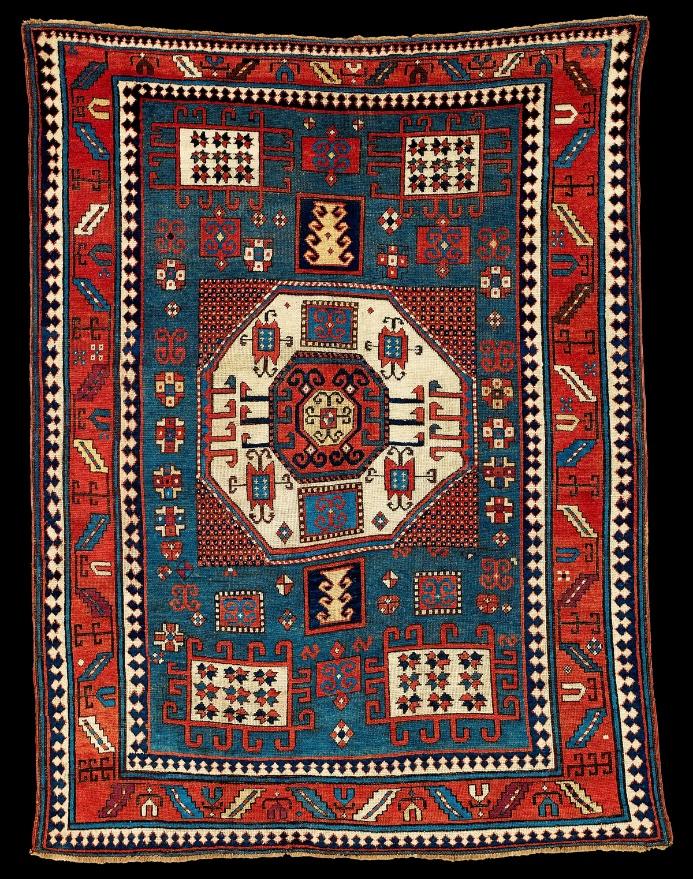
Rugs with other designs could also be found among Karachop rugs. Karachop prayer designs adorned with colorful motifs including human and animal figures.
